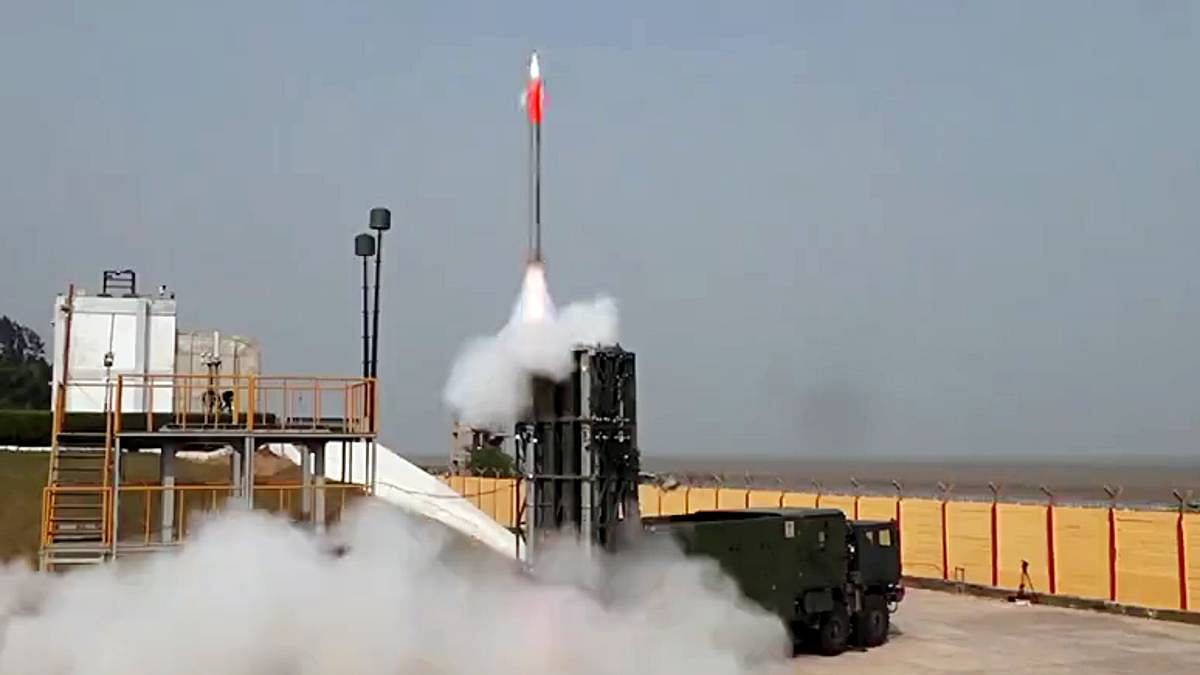SOURCE: AFI


India’s potential procurement of the Lockheed Martin F-35A Lightning II has been a subject of considerable debate among defense analysts. Recently, defense analyst Ranesh Rajan told AFI that India should only consider acquiring the F-35A if it receives full access to the fighter’s mission computer source code and AESA (Active Electronically Scanned Array) radar system, similar to what Israel has negotiated for its F-35I Adir variant. This access would allow India to integrate indigenous weaponry and communication systems, ensuring interoperability with Indian and Russian-made fighter jets like the Su-30MKI.
The F-35A, while one of the most advanced stealth fighters in the world, comes with strict operational restrictions imposed by the United States. These restrictions prevent foreign operators from fully customizing the aircraft’s systems to their own operational needs. If India were to acquire the F-35A under standard Foreign Military Sales (FMS) terms, it would face significant limitations in integrating Indian weaponry, upgrading subsystems, and ensuring seamless connectivity with its existing combat aircraft.
Continue readingSOURCE: AFI


Harnessing the expertise and knowledge accrued from the construction of the MILGEM Class Ships, the Pakistan Navy is now setting its sights on a new horizon with the development of the JINNAH Class Frigates (JCF). This initiative marks a significant milestone as it will be the first instance of Pakistan designing and building a frigate-sized warship entirely on its own soil.
The MILGEM project, a collaborative effort with Turkey, has been instrumental in providing Pakistan with hands-on experience in shipbuilding, from design to commissioning. This partnership not only delivered four advanced corvettes to the Pakistan Navy but also facilitated a comprehensive transfer of technology (ToT), enabling Pakistani engineers and technicians to grasp the nuances of naval ship construction. The MILGEM ships, known in Pakistan as the Babur-class corvettes, have been a stepping stone, giving the Pakistan Navy the confidence and capability to embark on the more ambitious JCF project.
Continue readingSOURCE: AFI


In a strategic move to fortify its defenses along the Eastern border with China, India has significantly ramped up the deployment of the Medium Range Surface-to-Air Missile (MR-SAM) system, in collaboration with Israel. This escalation in defense capabilities comes at a time when tensions remain high along the Line of Actual Control (LAC), particularly in the sensitive regions of Ladakh, Sikkim, and Arunachal Pradesh.
Ladakh, having been a focal point of recent border skirmishes, is already under the protective umbrella of both the MR-SAM and the indigenously developed Akash missile systems. The MR-SAM, known as “Abhra” in India, has been instrumental in providing air defence against a variety of aerial threats, including fighter jets, drones, and cruise missiles. The presence of these systems in Ladakh sends a clear message of India’s preparedness to safeguard its territorial integrity from air-based threats.
Continue readingSOURCE: AFI


Founded in 2022 by Hitendra Singh and Kajal Rajbhar, T-Hub-incubated aerospace startup SpanTrik was born from a vision to transform humanity’s approach to space exploration. “Traditional rockets are magnificent feats of engineering but incredibly wasteful. After a mission, most of the rocket is lost, falling into the ocean. That’s why we are building ‘Raven,’ a fully reusable rocket designed to change the game,” explains co-founder Kajal Rajbhar.
Set to launch in 2028, Raven is SpanTrik’s flagship project designed to support a variety of missions, from deploying mega constellations of satellites and carrying payloads to the Moon to aiding humanity’s steps toward Mars. “Raven can carry 8 to 22 tonnes to Low Earth Orbit (LEO) and 5 tonnes to Mars. What sets it apart is its green propulsion system, which uses LNG (Liquefied Natural Gas) and LOX (Liquid Oxygen). These fuels are environmentally friendly, aligning with our commitment to sustainability,” Kajal shares.
Continue readingSOURCE: AFI


Mumbai’s innovative startup scene has just gotten a boost with Air Recon unveiling its game-changing ‘Quick-release Systems’ designed for Unmanned Aerial Vehicles (UAVs) and Ground Control Systems (GCS). This breakthrough technology, tailored to integrate with standard-issue plate carriers, promises to enhance rapid deployment and maneuverability for tactical operations.
Air Recon’s Quick-release Systems represent a significant leap in the integration of drone technology with personal equipment.
Continue readingSOURCE: RAUNAK KUNDE / NEWS BEAT / IDRW.ORG


The Indian Defence Budget has confirmed that the Capital Outlay for the upcoming financial year will include funding for project clearance of the Twin Engine Deck-Based Fighter (TEDBF) program and the Remotely Stealthy Powered Autonomous Unmanned Combat Aerial Vehicle (RSPA UCAV).
The budget statement specifies that “some major acquisitions planned in the next year, such as Long Endurance Remotely Piloted Aircraft of High and Medium Altitude and Stage Payment of Deck-Based Aircraft, will be funded out of this allocation.”
Continue readingSOURCE: RAUNAK KUNDE / NEWS BEAT / IDRW.ORG


India plans to position its ambitious Advanced Medium Combat Aircraft (AMCA) program on the global stage by inviting international partners to join the project after the aircraft’s first flight. This strategic move aims to make the fifth-generation stealth fighter jet export-ready from the outset while addressing the program’s significant funding and production requirements.
The AMCA program, India’s flagship fifth-generation fighter jet initiative, is poised to play a critical role in modernizing the Indian Air Force (IAF) while also tapping into the global defence market. Sources familiar with the development told idrw.org that once the initial prototypes are flown, India will actively approach countries seeking access to fifth-generation fighter technology.
Continue readingSOURCE: RAUNAK KUNDE / NEWS BEAT / IDRW.ORG


In a significant move towards enhancing its combat capabilities, the Indian Navy is set to fund the research and development of a deck-based Unmanned Combat Aerial Vehicle (UCAV). This UCAV will be based on the Ghatak platform, currently being developed for the Indian Air Force (IAF), and will feature the indigenous Dry Kaveri engine for propulsion.
The Navy is in discussions with the Aeronautical Development Establishment (ADE), the organization spearheading the development of the Ghatak UCAV for the IAF. The Ghatak, designed as a 13-ton stealth UCAV for deep-strike missions, is set to serve as the foundation for its naval variant.
Continue readingSOURCE: AFI


A newly unveiled scale model of the Tejas MkII highlights an advanced strike and air mission configuration, showcasing India’s growing indigenous combat capabilities. The model demonstrates an impressive combination of weaponry, reinforcing Tejas MkII’s role as a versatile multirole fighter.
The showcased loadout includes a diverse mix of air-to-air and air-to-surface weaponry, emphasizing its capability for deep strike and defensive operations. The configuration consists of.
Continue readingSOURCE: AFI


In an insightful dialogue with Sputnik India, Igor Korotchenko, a noted military analyst and editor-in-chief of Russia’s ‘National Defense’ magazine, emphasized the strategic importance of an advanced aerospace defense system for India. Amidst an escalating Indo-Pacific arms race, Russia’s offer to aid India in building such a defense is seen not just as a military upgrade but as a monumental legacy for Prime Minister Narendra Modi.
India’s geopolitical landscape is fraught with challenges, primarily from its two neighboring rivals, China and Pakistan, both of whom boast sophisticated air forces and ballistic missile capabilities. Korotchenko articulates that in the realm of national defense, “A capable aerospace defense system is a mark of a global power and a top military state.” He draws parallels with even non-state actors like the Houthis, who have managed to develop capabilities in drones and ballistic missiles, underlining the necessity for India to fortify its defenses.
Continue readingSOURCE: AFI


Hyderabad-based startup, Redon Systems, has made significant strides in defense technology with the development of an indigenous 6×3 wheeled, tube-launched loitering munitions system. The introduction of their Multi-Barrel UAV Launcher (MBUL) offers a new paradigm in the rapid deployment of Unmanned Aerial Vehicles (UAVs), providing a strategic advantage in military operations.
The MBUL system is engineered to launch up to 16 UAVs either simultaneously or in a rapid succession, which is critical in time-sensitive combat scenarios. The launcher uses a pneumatic barrel system, where launch angles can be customized to meet specific mission requirements. This innovation ensures minimal turnaround time for continuous UAV operations, with a reload time that supports uninterrupted engagements.
Continue readingSOURCE: AFI


A comparative analysis of the front sections of four modern frigates—the Chinese PLAN Type 054A (545), the French-Italian FREMM (F-597), the Indian Navy’s P17A (F33), and the Russian VMF Project 22350 (417)—reveals significant differences in armament, highlighting how the Indian P17A frigate might be underarmed in comparison.
Here, we delve into the weapon systems of each vessel to understand these disparities:
Continue readingSOURCE: IDRW.ORG


In a significant development for India’s aerospace sector, General Electric (GE) and Hindustan Aeronautics Limited (HAL) are on the verge of concluding a deal for 99 F414-GE-INS6 engines, with the total deal now valued at an estimated $1.5 billion. This marks a substantial increase from the 2010 deal, which was worth $1 billion, adjusted for inflation over nearly 15 years and an increase in the level of technology transfer (ToT) from 56% to 80%, justifying the additional $500 million sought by GE.
The agreement, expected to be finalized by March 2025, will see the first engine rollout of HAL’s engine manufacturing facility in Bangalore by April 2028. GE Aviation has already delivered an initial batch of F414-GE-INS6 engines, that will be used on Tejas MkII Prototypes with subsequent units to be manufactured in India under the ToT arrangement.
Continue readingSOURCE: IDRW.ORG


In a significant stride towards strengthening India’s nuclear deterrence, Defence Minister Rajnath Singh has officially confirmed the successful deployment of the Agni-V missile equipped with Multiple Independently Targetable Re-entry Vehicle (MIRV) technology, known as “Mission Divyastra.”
Speaking at a press conference, Singh articulated the strategic implications of this deployment. “Agni V sends a strong message: India is prepared to defend its sovereignty against any threat. It enhances our deterrence capability and demonstrates our readiness to face modern challenges,” he stated. The Agni-V, now with MIRV capability, significantly amplifies India’s ability to target multiple locations with a single missile launch, complicating enemy defense strategies.
Continue readingSOURCE: AFI


The recently finalized Project-75I submarine program, under which Mazagon Dock Shipbuilders Limited (MDL) will construct all six German ThyssenKrupp Marine Systems (TKMS)-designed submarines, highlights India’s commitment to bolstering its underwater fleet. However, this winner-takes-it-all approach has sparked a debate about missed opportunities for fostering competitive and parallel submarine construction capabilities in the country.
Larsen & Toubro (L&T), an Indian private sector defense and engineering giant, has demonstrated its expertise in complex defense projects, including nuclear submarines and other naval platforms. Allowing L&T to manufacture at least two of the six submarines under Project-75I could have delivered several strategic and economic benefits.
Continue reading